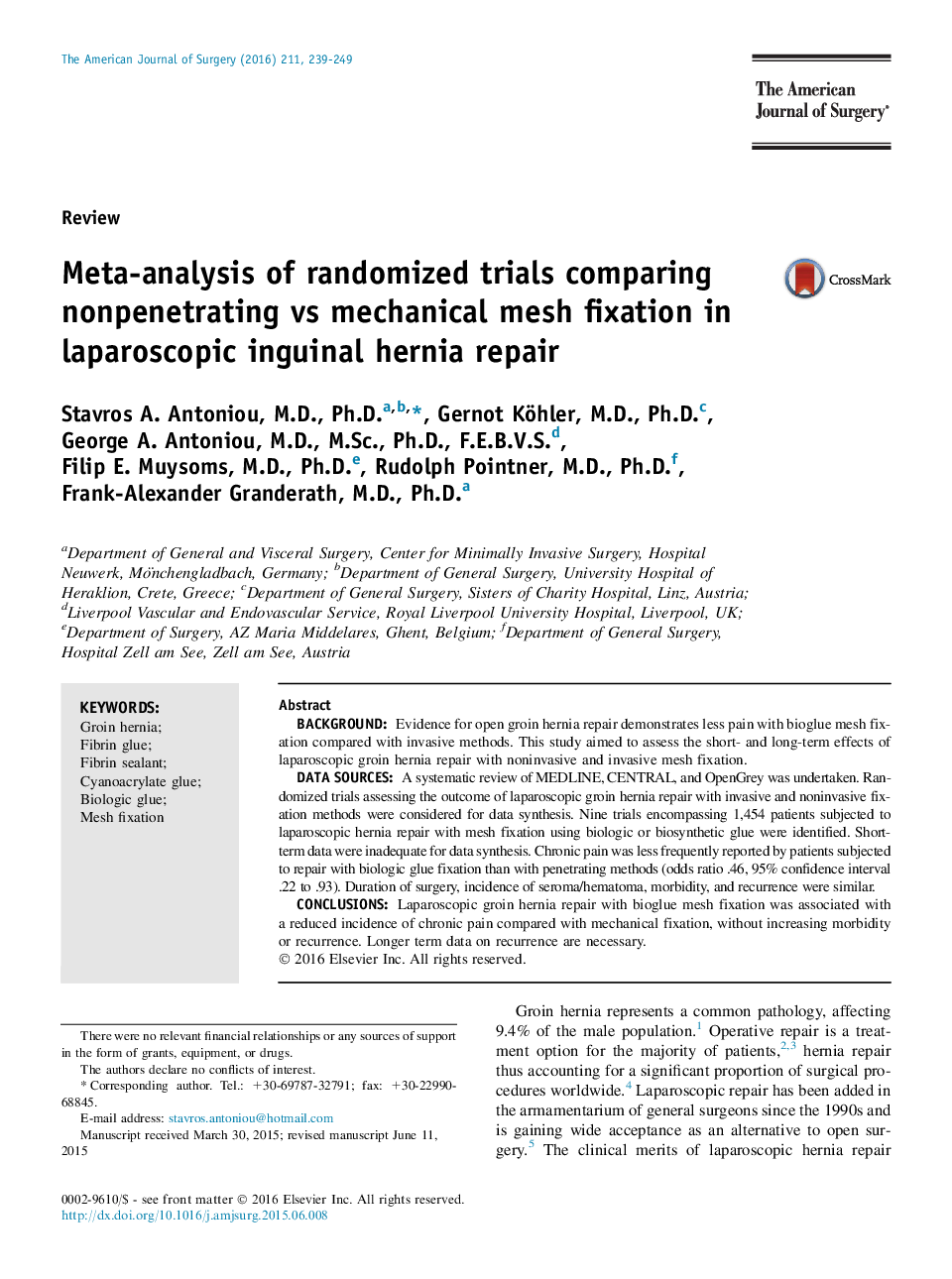| Article ID | Journal | Published Year | Pages | File Type |
|---|---|---|---|---|
| 6250500 | The American Journal of Surgery | 2016 | 13 Pages |
â¢Bioglue has recently emerged as an alternative means of mesh fixation in open and laparoscopic groin hernia repair.â¢Synthesis of data suggests that this method reduces chronic postoperative pain, without increasing morbidity or recurrence.â¢Longer term data on recurrence are needed.
BackgroundEvidence for open groin hernia repair demonstrates less pain with bioglue mesh fixation compared with invasive methods. This study aimed to assess the short- and long-term effects of laparoscopic groin hernia repair with noninvasive and invasive mesh fixation.Data SourcesA systematic review of MEDLINE, CENTRAL, and OpenGrey was undertaken. Randomized trials assessing the outcome of laparoscopic groin hernia repair with invasive and noninvasive fixation methods were considered for data synthesis. Nine trials encompassing 1,454 patients subjected to laparoscopic hernia repair with mesh fixation using biologic or biosynthetic glue were identified. Short-term data were inadequate for data synthesis. Chronic pain was less frequently reported by patients subjected to repair with biologic glue fixation than with penetrating methods (odds ratio .46, 95% confidence interval .22 to .93). Duration of surgery, incidence of seroma/hematoma, morbidity, and recurrence were similar.ConclusionsLaparoscopic groin hernia repair with bioglue mesh fixation was associated with a reduced incidence of chronic pain compared with mechanical fixation, without increasing morbidity or recurrence. Longer term data on recurrence are necessary.
